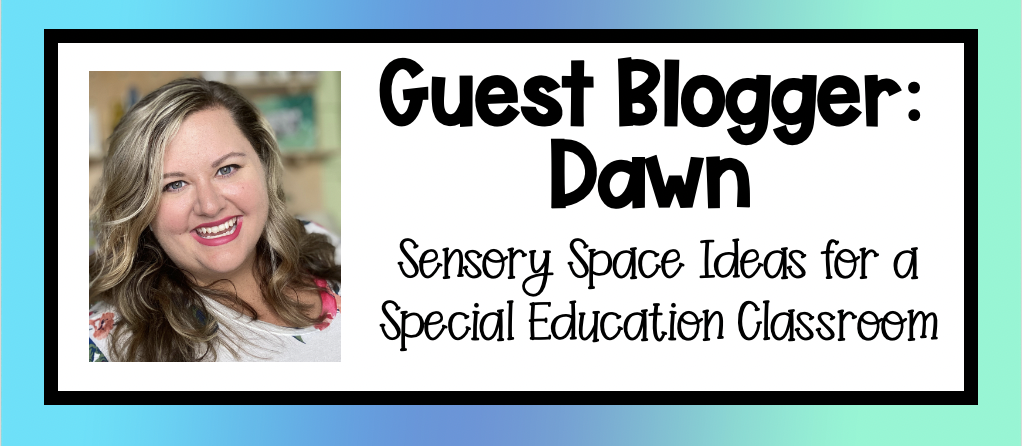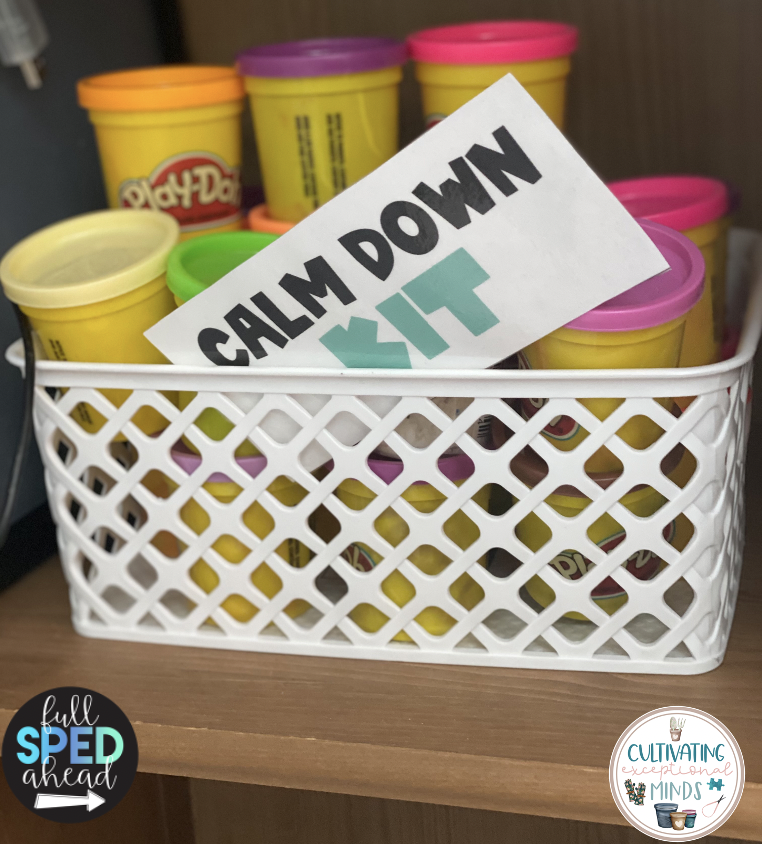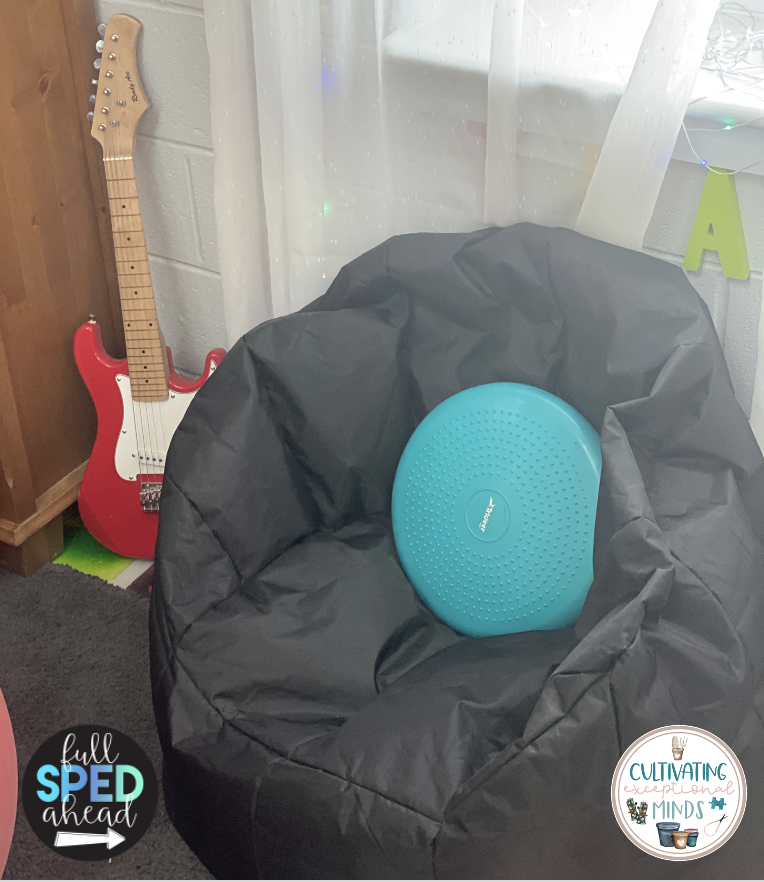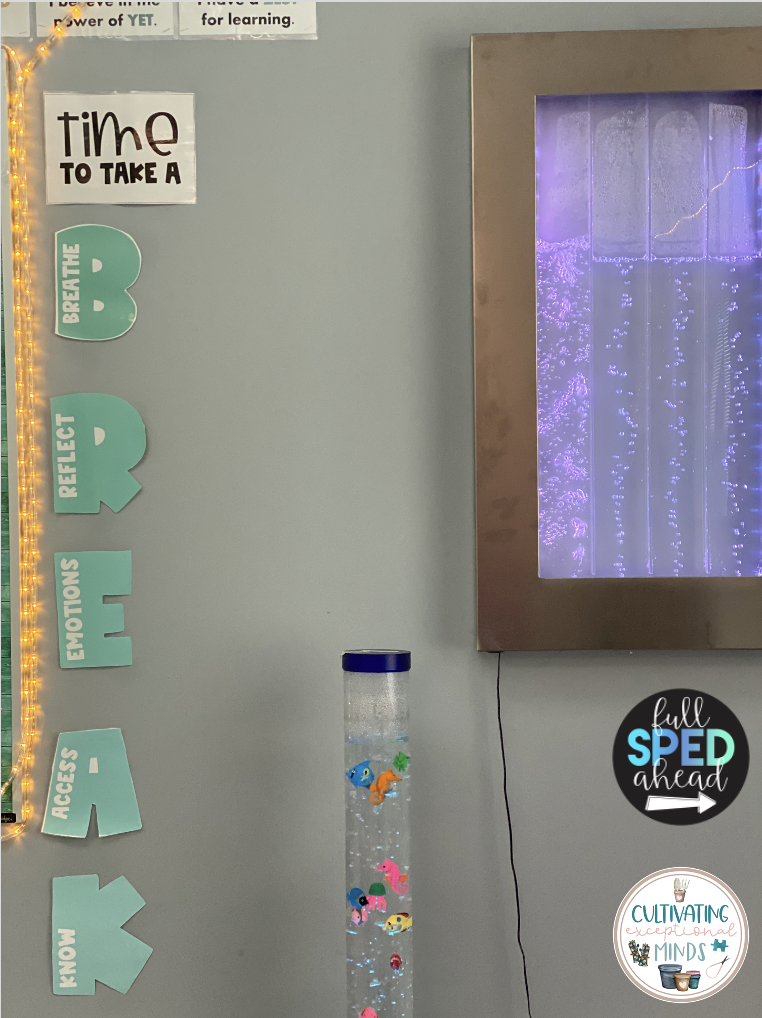I’m excited to introduce this week’s guest blogger, Dawn from Cultivating Exceptional Minds to talk all about a sensory space!

A sensory corner is exactly what you would think. It is a therapeutic space with equipment or resources. These resources provide our students with special needs the appropriate kind of sensory input. It is a calming space when our students get overwhelmed. In addition, sensory room ideas include a corner in the room or a separate room depending on what you have available. You can have a few sensory items or you can have high tech sensory items.
There is a way to get started with every budget. Sensory corners are not limited to just special education, self-contained classrooms or even resource rooms. They are effective in those settings, but they can also be implemented in general education classrooms as well. It’s important to know that it really can be used anywhere.
Especially after the pandemic, we, as educators, have found all students have moments where things just become too much for normal functioning. Having a sensory area would allow them a safe space to decompress as well.

There is not really a wrong answer to this question. There are literally thousands of options for resources and items that you can put in a sensory area. If you are just getting started then you want to focus on a few key items that work well with your students’ needs. In addition, you will want some seating space for your students. Bean Bag chairs or exercise balls are a good place to start.

Teachers should add a few fidgets to the space. Some sensory corner ideas include playing soft music, weighted blankets, reversible sequin pillows, motion timers, bubble blowers, balance boards or a small trampoline (if your space allows). Also have different types of fidgets, such as squishy balls or kinetic sand.
Sensory boxes are filled with sand, rice, or dried beans also work well for students to use. Options for dimming the light in the area would be to cover a window nearby or use light covers and use lamps or twinkle lights. If space allows, being able to use a small tent or a swing in the sensory area would be amazing. Each sensory area is different and should be based on how it will best benefit your students.

Next, being a teacher can often mean a lot of money from our own pockets for these sensory room ideas. This time, you might not have to find the money. There is actually a grant option that can help you with getting your sensory space ready to go. It is easy to fill out and I know plenty of teachers who have been awarded the funding for different projects. This link will tell you everything you need to know about getting started on your own grant to fund your sensory space creation!!
Need more help? If you need more help with how to set up a sensory corner, check out this podcast episode for even more ideas and tips. I always want to be here to help so I’ve put together a list of sensory essentials for calming down.
What are you looking for?
COPYRIGHT © 2025 Full SPED Ahead